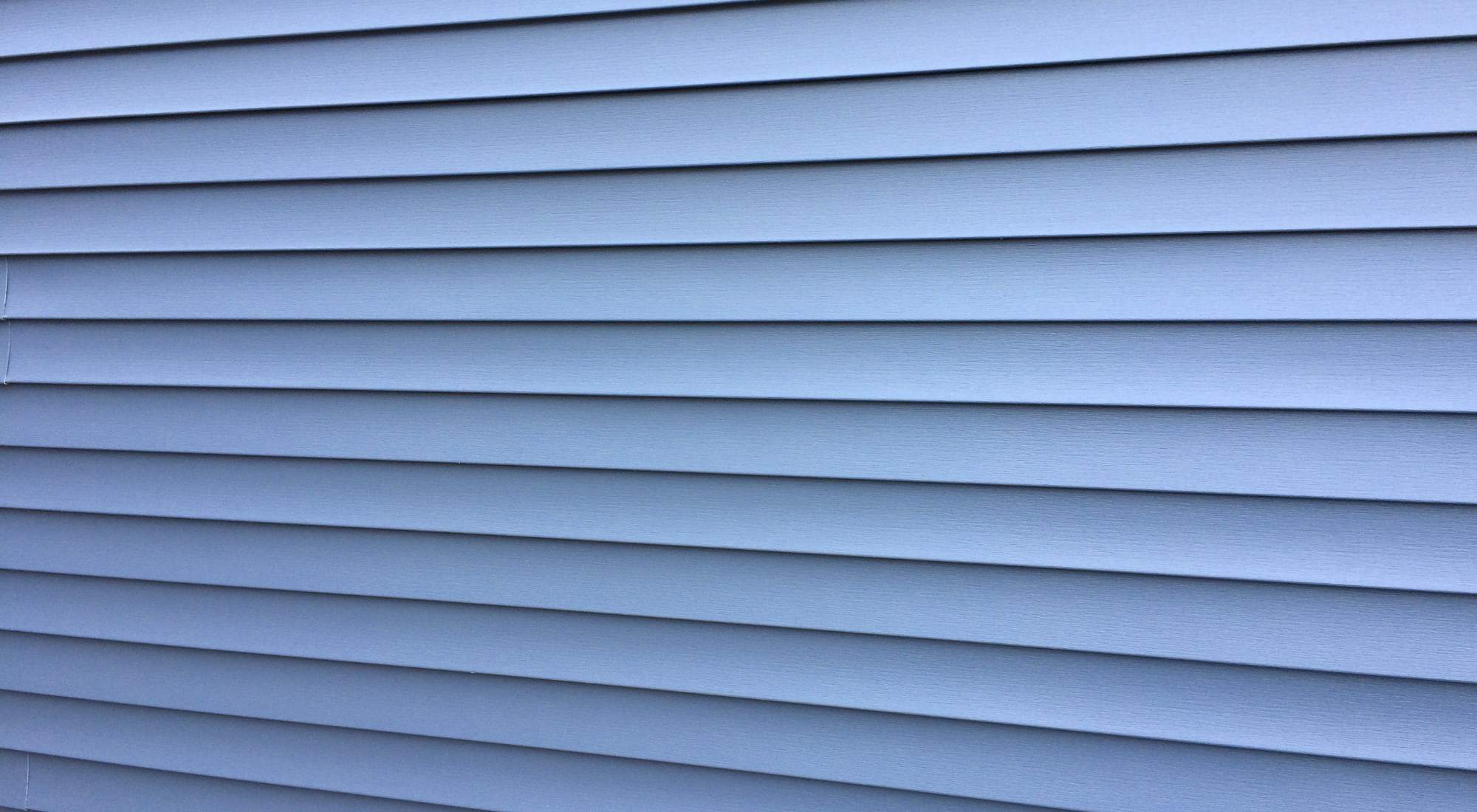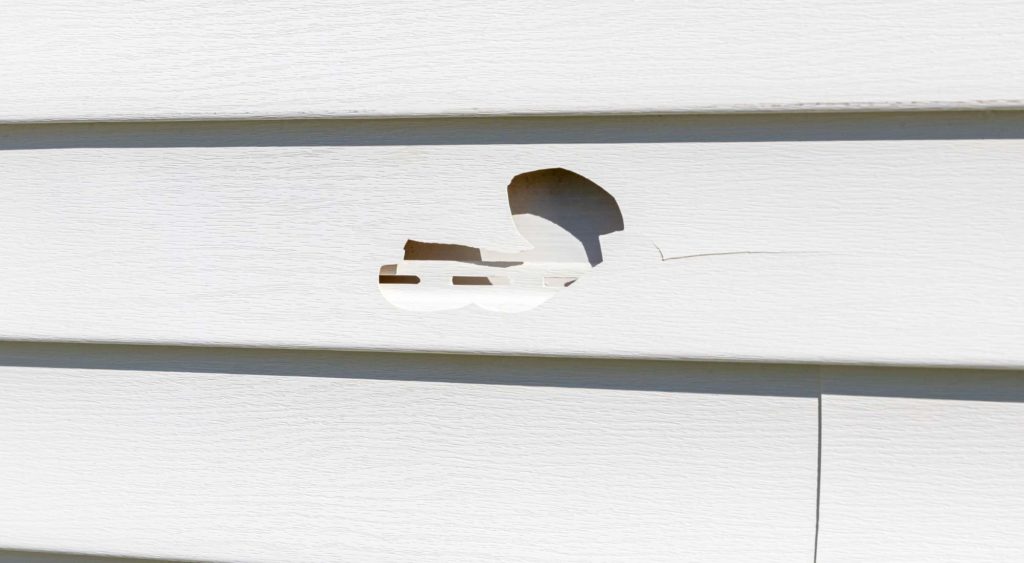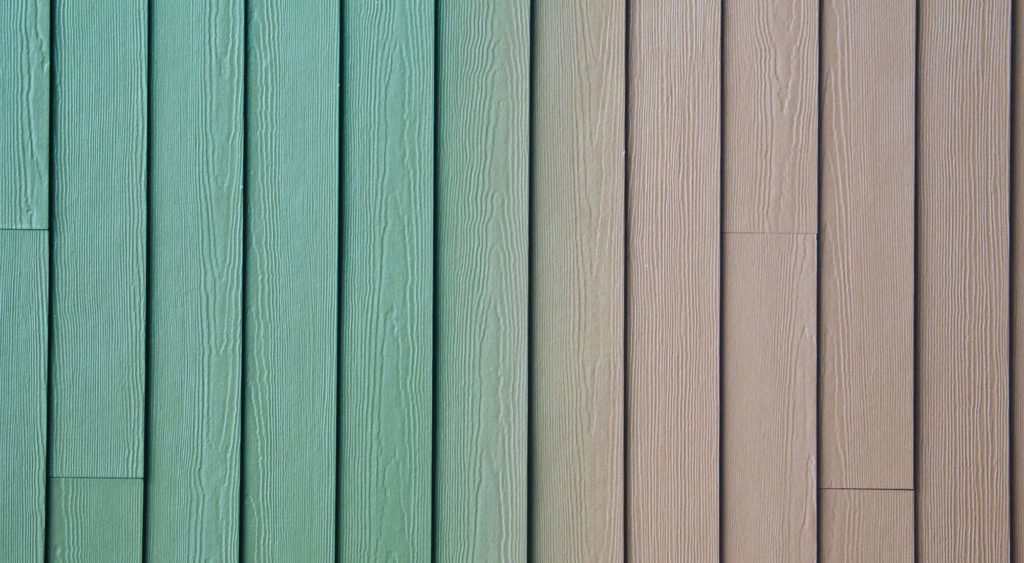Vinyl siding has long been a popular choice for homeowners thanks to its durability, versatility, and low-maintenance nature. It serves as a home’s outer layer of defense and endures a lot of wear and tear over time.
The occasional crack, hole, or dent is inevitable, but fixing it doesn’t have to be daunting.
In this guide, we’ll teach you how to identify and repair vinyl siding, ensuring your home stays protected and maintains its curb appeal for years to come.
Table of Contents
- Why Is Vinyl Siding Repair Important?
- Signs That Your Vinyl Siding Needs Some Attention
- When Repairs Aren’t Possible, You May Need To Call in the Pros for Vinyl Siding Replacement
- 5 Common Vinyl Siding Repairs and How-To Steps
- #1: Repairing Cracks/Dents
- #2: Patching Holes
- #3: Securing Loose Panels
- #4: Replacing Damaged Panels
- #5: Repainting Faded Vinyl Siding
- Transform Your Vinyl Siding With the Professionals at Two Brothers Painting
Why Is Vinyl Siding Repair Important?
Vinyl siding is known for being incredibly sturdy and durable. When the inevitable damage shows up, it’s crucial to identify and repair the issue as quickly as possible.
Maintaining the structural integrity of your home’s vinyl siding is beneficial in many ways:
- Ensures protection from the elements. Vinyl siding protects your home’s underlying structure from rain, wind, rodents, termites, and other pests.
- Prevents further damage. Repairing minor issues in your siding right away can prevent them from escalating. Small cracks, dents, holes, or loose panels left unattended can lead to structural damage.
- Maintains an attractive aesthetic. Maintaining your vinyl siding benefits your overall property value and curb appeal.
- Maximizes energy efficiency. Vinyl siding acts as insulation. Damaged siding allows cold or hot air to leak in or out of the structure, reducing your home’s energy efficiency.
Signs That Your Vinyl Siding Needs Some Attention
Cracks, breaks, loose panels, and gaps are inevitable as vinyl siding endures regular wear and tear. Unfortunately, these issues expose your home’s underlying structure to the elements and provide entry points for pests. Identifying and repairing these damages before they become more extensive is essential.
Some of the most common causes of cracks, breaks, loose panels, and gaps include:
- Extreme heat or sudden cold snaps
- Strong winds
- Thunderstorms and hail
- House movement/settling
- Aging
- Improper installation
- Use of low-quality materials.
- Incorrect installation/nailing
- Impact damage
Another sign of structural damage is warping/bubbling. When you notice warping or bubbling on your home’s siding, it’s crucial to determine the cause and address it quickly. These issues can be caused by extreme heat exposure, aging, proximity to grills or heaters, or trapped moisture.
Warped panels can detract from your home’s overall appearance and are far less effective in providing protection from the elements. Ignoring these issues can eventually lead to more extensive damage, such as rot or mold growth.
Gray, white, or black spots on your home’s vinyl siding indicate the presence of mold and mildew. This is commonly caused by water exposure and should be fixed immediately to prevent it from spreading to your home’s structure.
When Repairs Aren’t Possible, You May Need To Call in the Pros for Vinyl Siding Replacement
While many manageable damages may appear on your home’s vinyl siding, sometimes the issues are too frequent or extensive to continue fixing by yourself.
Here are some inevitable problems that will require professional repair or replacement:
- Aging: Vinyl siding typically lasts about 20-40 years, depending on weather exposure and how well it has been maintained. Older siding is more susceptible to warps, cracks, and breaks that leave your home’s structure vulnerable to damage. When your siding no longer protects your home, it’s time to upgrade.
- Extensive damage: While repairing the occasional crack or dent can go a long way in prolonging the life of your home’s siding, constant fixing is usually indicative of a much larger issue. It may be more cost-effective to invest in a complete replacement.
- Fading: Color fading happens naturally due to continued exposure to the elements over time. Faded vinyl siding can be unsightly and significantly reduce your home’s curb appeal and resale value. Unfortunately, color-matching new siding to the old is nearly impossible, making replacement necessary unless you opt for a complete repainting.
Looking for a team of professionals to give a new look to your faded vinyl siding? Set up a consultation with Two Brothers Painting.
5 Common Vinyl Siding Repairs and Steps To Complete the Repairs
While some issues are signs of a deeper problem and require total siding replacement, others only need simple DIY repairs. This guide is designed to get you started on identifying and repairing issues with your home’s siding.
#1: Repairing Cracks/Dents
Cracks, dents, and small holes in your siding are common and relatively easy to fix using supplies from your local hardware store.
Supplies Needed
- 100-grit Sandpaper
- 220-grit Sandpaper
- Putty Knife
- Exterior-grade caulking/sealant
- Exterior paint
- Soap and water
- Clean cloth/rag
Steps To Repair Cracks/Dents in Vinyl Siding
- Use 100-grit sandpaper to soften the edges of the hole, crack, or dent.
- Clean the area with soap and water to remove any dirt or debris. Allow this to dry completely before continuing the repair.
- Apply filler to the hole, crack, or dent using a putty knife. Remove any excess filler and allow the area to fully dry.
- Once the filler has dried, use 220-grit sandpaper to ensure it is level with the siding surface. Clean the area once more with a damp rag and let it dry.
- Paint over the repair with exterior paint.
#2: Patching Holes
Certain holes in vinyl siding may be too big to fix with filler but too small to justify replacing the entire panel. In this case, it’s possible to patch the hole with a piece of spare paneling.
Supplies Needed
- Replacement vinyl siding
- Vinyl siding zip tool
- Exterior-grade adhesive
- Galvanized siding nails
- Tin snips or utility knife
- Sandpaper
Steps To Patch Holes in Vinyl Siding
- Using your tin snips/utility knife, cut a section of replacement vinyl siding that is larger than the hole.
- Apply exterior-grade adhesive to the back of the replacement patch.
- Firmly place the replacement patch over the hole, making sure that it properly aligns with the existing panel.
- Use galvanized siding nails to secure the patch in place.
- After the repair has completely dried, use a putty knife and sandpaper to remove any overflowing adhesive and clean the area.
#3: Securing Loose Panels
Vinyl siding panels typically become loose because of disconnected pieces or missing nails. Either way, securing the pieces yourself is simple.
Supplies Needed
- Vinyl siding zip tool
- Galvanized siding nails (optional)
- Caulking gun (optional)
Steps To Secure Loose Vinyl Siding Panels
- Begin by using your siding zip tool to unlock the bottom edge of the loose panel. You will then be able to identify the extent of the disconnect between two loose pieces of siding.
- If you notice that you need new nails upon your initial inspection, you can now use your hammer to place more galvanized nails into the nail hem.
- Begin pushing the loose edges back into place against the locking ridge.
- At this point, you can place a small amount of silicone caulk in the groove to reinforce the bond between the two pieces.
#4: Replacing Damaged Panels
Sometimes, a panel’s damage may be too extensive for a simple repair. If you’ve managed to hang on to extra paneling from your siding’s initial installation or can find matching pieces at your local hardware store, you can replace a heavily damaged panel by yourself.
Supplies Needed
- Replacement vinyl siding
- Vinyl siding zip tool
- Galvanized siding nails
- Tin snips or utility knife
- Tape measure
- Pry bar
- Claw hammer
Steps To Replace Damaged Vinyl Siding Panels
- Use your vinyl siding zip tool to unlock the panel that sits directly above the one that you are looking to replace. This will unlock it from the damaged panel underneath.
- With the damaged panel exposed, you can now remove the nails holding it in place using your pry bar.
- Remove the damaged section of the siding.
- Prepare the replacement siding panel by measuring and cutting it to the correct size.
- Slide the replacement panel into position, pushing up until the bottom lip locks onto the panel below.
- Drive galvanized nails through the nailing flange. Nails should be placed 12-16 inches apart and should be snug, but the panel should still be able to move slightly horizontally. This will ensure that the siding does not buckle.
- Once the replacement panel is nailed, use your zip tool to re-lock the panel above.
#5: Repainting Faded Vinyl Siding
When aging and sunlight exposure cause your home’s vinyl siding to fade, getting it repainted can bring back its appearance and increase your property value. You can find more information on repainting your siding here, but the following supplies and steps should help give you a feel for what’s in store.
Supplies Needed
- Acrylic-based exterior paint
- Primer
- Cleaning supplies
- Hose or power washer
- Safety gear/protective clothing
- Paint sprayer, rollers, and brushes
- Painter’s tape
- Old rags or towels
- Any necessary repair supplies
Steps To Repaint Vinyl Siding
- Find a good acrylic-based exterior paint that matches or is lighter than your siding’s existing color.
- Choose to paint on a day with mild temperatures, clouds, and low humidity.
- Identify and repair any existing cracks, holes, dents, or other damaged areas.
- Ensure that the siding is clean. This is best done with a power washer but can also be accomplished using a scrub brush.
- Put down a drop cloth to protect surrounding areas, such as grass, bushes, or pavement.
- Use masking tape around windows, doors, and trim.
- Prime the vinyl siding if needed.
- Apply at least two coats of your chosen paint, leaving time to dry in between.
- Remove masking tape and protective materials.
- Inspect to ensure no missed spots may need a touch-up.
Repainting your home’s vinyl siding may seem manageable, but hiring a team of experienced professionals can ensure a high-quality and durable result.
Transform Your Vinyl Siding With the Professionals at Two Brothers Painting
If your vinyl siding has begun showing signs of aging and you’re ready to give it a fresh look, Two Brothers Painting is here to help. We aim to provide stellar service for clients in Portland, Beaverton, Tigard, Bethany, Lake Oswego, West Linn, Clackamas, and Hillsboro.
Our certified, award-winning team guarantees quality work the first time. Just ask our clients.
We offer a variety of services, including:
- Interior painting
- Exterior painting
- Pressure washing
- Cabinetry and woodwork
- Exterior stains and finishes
- Wood repairs
Get in touch to schedule an estimate today.




